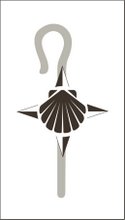It is summer time in North Carolina, and the hats are out of the closet and on our heads. Many of us work outside wear hats during all seasons of the year, like hard hat helmets, or baseball caps to keep the sun out of the eyes. When playing sports like baseball and golf, we wear hats that show which team, or brand, we are rooting for. When the sun feels like it is keeping the temperature near the boiling point, many of us wear summer hats outside with broad brims to keep not only our faces, but ears and the back of our heads protected from the now-damaging rays of too much sunshine. And for those of us who drive small convertibles, hats are a must when the wind gets good and strong, and the sun is beaming down on us.
This column on hats is sparked by my recent pilgrimage to
However, the Egyptians did not wear a kippah but a keffieh, which is a folded cloth made into a triangle, then wrapped around the head, in which the Bedouin who wears this headdress could keep pocket change or documents in it, as well as roll it up at night and wear use it as a pillow. Unlike the Jews, a keffieh could be worn by Muslim and Christian alike…and even those who are Jewish would wear the headdress of the Bedouin.
What was interesting was that in
What this sparked within me is simply this, in a place and age in which our hats say some things, but not all things, about us: what are the outward signs and symbols, pointers and indicators, that let other people know we are of God, followers of Christ, inspired by the Spirit? As we sit under trees seeking shade, drinking iced sweet tea, relaxing in rocking chairs and holding babies, let us think, and be more purposeful, in letting others know about the God who loves us most.
Pilgrim peace, Brett


No comments:
Post a Comment